How to Choose the Right Vacuum Pump for Your Needs
Choosing the right vacuum pump is critical to ensuring efficiency, reliability, and optimal performance in your operations. With so many options available, finding the right one can feel overwhelming. Whether you work in manufacturing, healthcare, or laboratory settings, understanding the key factors that influence your decision will help you make the right choice. Let’s explore how to find the perfect vacuum pump for your needs.
Step 1: Understand Your Application
Before diving into specific pump types, it’s essential to identify how and where the vacuum pump will be used. Different industries have unique demands:
- Manufacturing: Vacuum pumps are often required for assembly lines, packaging, material handling, and degassing. Reliability and high throughput are critical factors.
- Healthcare: Hospitals and clinics use vacuum pumps for sterilization, suction equipment, and operating rooms. Pumps must meet strict safety and cleanliness standards.
- Laboratories: Research and development facilities rely on precise vacuum levels for applications like filtration, sample drying, and freeze-drying.
Understanding the specific requirements of your industry is the first step in narrowing down your options.
Step 2: Consider Key Factors
a. Type of Vacuum Pump
Vacuum pumps come in various types, each suited to specific applications. Here are the most common options:
- Rotary Vane Pumps: These are common in manufacturing and industrial applications and are ideal for high-capacity, oil-sealed operations.
- Diaphragm Pumps: These are oil-free and suitable for laboratories where contamination must be avoided.
- Liquid Ring Pumps: Best for applications that involve handling wet or corrosive gases.
- Scroll Pumps: High-efficiency pumps ideal for environments requiring ultra-clean operations, such as in research facilities.
Each type has its strengths and limitations. Choose based on the demands of your application.
b. Required Vacuum Level
Vacuum levels vary depending on the process requirements. For example:
- Low vacuum (above 1 mbar): Used in packaging and material handling.
- Medium vacuum (1 to 10^-3 mbar): Suitable for applications like vacuum drying.
- High vacuum (below 10^-3 mbar): Common in laboratories and semiconductor manufacturing.
Understanding the vacuum level you need will ensure your pump meets performance expectations.
c. Pump Size and Capacity
Selecting the right size is vital to avoid inefficiency:
- A pump that’s too small may struggle to handle your workload.
- An oversized pump will likely waste energy and increase your operational costs.
Calculate your capacity needs based on the volume and speed of the vacuum you require.
d. Maintenance and Lifespan
Different pumps have varying maintenance requirements:
- Oil-sealed pumps require regular oil changes and filter replacements.
- Dry-running pumps are low maintenance but may have higher upfront costs.
Consider the availability of replacement parts and the expected lifespan when making your choice.
e. Energy Efficiency
Energy-efficient pumps save money and reduce environmental impact. Look for features like variable speed drives (VSD) that adjust pump performance to match the workload, minimizing energy consumption.
Step 3: Avoid Common Mistakes
Selecting the wrong vacuum pump can lead to unnecessary costs and operational issues. Here are some pitfalls to avoid:
- Overlooking Specific Requirements: Not all pumps are compatible with all applications. Ensure the pump meets your exact needs.
- Choosing Based on Cost Alone: A cheaper pump may have higher long-term maintenance costs and shorter lifespans.
- Ignoring Maintenance Costs: Remember to factor in ongoing expenses like oil changes, filters, and repairs.
Step 4: Make an Informed Decision
When you’ve narrowed down your options, consider reaching out to experts for advice. A consultation can help ensure you’re choosing a pump that will maximize efficiency and reliability in your operations.
Conclusion
Choosing the right vacuum pump doesn’t have to be overwhelming. By understanding your application, evaluating key factors like pump type, vacuum level, and maintenance requirements, and avoiding common mistakes, you can confidently select a pump that meets your needs.
Still unsure which pump is right for you? Contact our team today for expert guidance tailored to your specific application. Together, we’ll ensure you get the perfect solution for your operations.
Phone: 01302 439133
Mobile: 07498 644840
Email: enquiries@ivacps.co.uk
